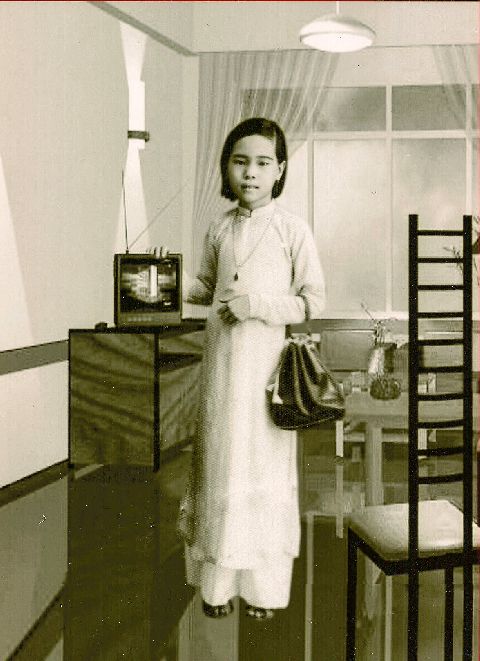Growing Bamboo
On the road…again!
Afghanistan to Zambia
Chronicles of a Footloose Forester
By Dick Pellek
Growing Bamboo
Almost every time that he passed the dwarf bamboo thicket planted alongside his house in Pennsylvania, the Footloose Forester was reminded that bamboo was part of his family life. At one time or another, he fished with a bamboo pole, slept on a bamboo bed in a bamboo shelter, ate meals from bamboo bowls, with bamboo chopsticks; and on placemats woven from bamboo fibers. Sometimes, one of the side dishes on the bamboo serving table was steamed bamboo shoots, ladled out with a long bamboo utensil. He and wife Thu preferred fresh bamboo shoots, but except when they lived in Hawaii and went out hunting for bamboo shoots on weekends, most of those tender shoots came from a can on the pantry shelf or a package from the freezer. When she was growing up, Thu was taller than most of the girls her age and was sometimes referred to as a little bamboo tree.

The bamboo tree, growing up
The daily sight, smell, or feel of bamboo in the Pellek household is also a reminder of the importance of bamboo in Asian culture. Most bamboos are tropical, but there are enough temperate-climate bamboos scattered around the USA to remind him that the versatile bamboo exists not too far away. So it was not surprising that when they established their homestead near Pittsburgh in 1979, Thu wanted to include hearty bamboo in her mix of outdoor plantings. Thirty years on, that original clump of bamboo is still going strong.
If one looks closely, however, you can also spot planted bamboo in a few other places of the local area where it managed to survive. Some of the tallest bamboos that Footloose Forester recalls seeing in recent years are located in the Maggie Valley of North Carolina. There is little doubt that they were originally introduced as ornamental plantings, but owing to the fact that bamboo can easily escape its original confines, some of the larger and virtually impenetrable thickets seen there are more than 50 feet in diameter. That particular variety is also very tall, exceeding 30-40 feet in height. Closer to home, 4-5 clumps of bamboo can be seen along the Pennsylvania Turnpike north of Philadelphia. When traveling west on the Turnpike, look to the right between mile markers 316 and 317 and you will find scattered clumps close to the roadway. Some stems are about 15 feet tall. Since they moved to Virginia, they now see bamboo along the roadsides almost every day. Only recently, in late 2012 did they spot a bamboo thicket that is worthy of a photo. The one shown below is only a few miles from their home in Virginia.
Bamboo gone wild behind a farm homestead in Virginia
Despite its propensity toward weediness, bamboo is such a useful plant that it is coming into vogue as wearing apparel. The strength of its fibers was always well understood but these days the techniques for making it into a more pliable material of suitable length is gaining traction. In the Pellek household, the bamboo pattern that Thu once selected for the beautiful drapes that she herself crafted might someday be woven from real bamboo.
Most of the daily and mundane uses of bamboo, however, are for makeshift tomato stakes, poles for knocking off high-up apples and plums, tools for reaming out clogged drainage pipes; and repairing broken toys. With its high tensile strength, short shafts of bamboo inserted into drilled holes of plastic or rubber toys that have broken apart, make them useable again in some cases where plain glue does not hold. There are usually enough stems of small and medium-sized diameter bamboo lying around in the back yard, to consider using them for various jobs. When previously thinned and seasoned bamboo stems are not available behind the shed outside, the Footloose Forester gets out the garden snippers and cuts a fresh one from the living plants. But this little tale would not be complete without acknowledging that a little 10-year-old from Stung Treng, Cambodia would grow into the most precious bamboo of all.
About the author
Related Posts
Comments 3
I loved your story, and ESPECIALLY that wonderful photo - the floor of that room was so clean and shiny Thu looks like she's standing on a sheet of glass! I have particularly loved my bamboo kitchen utensils, which have stood up to hears of use, abuse and "antimicrobial" setting of the dishwasher, whereas my wooden spoons eventually split and break.
Thank you, Susan. I'm delighted to know that you enjoyed the photo and the story. These days you can expect to find more bamboo kitchen utensils in stores because there are now sophisticated milling machines that make manufacturing more feasible. Look for another story about my bamboo tree in Legacy Stories, under the title, "Looking for Suzie."
We continue to look for bamboo growing in the vicinity, and we continue to find it in both expected and unexpected places.





